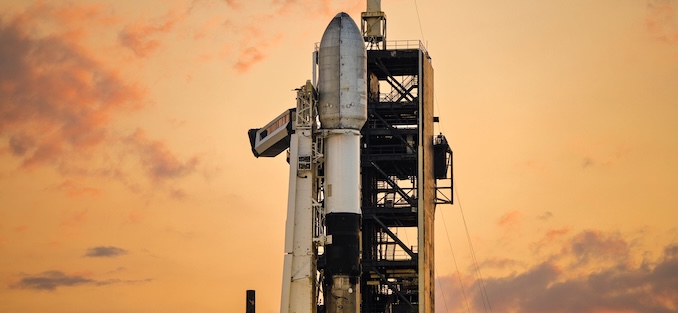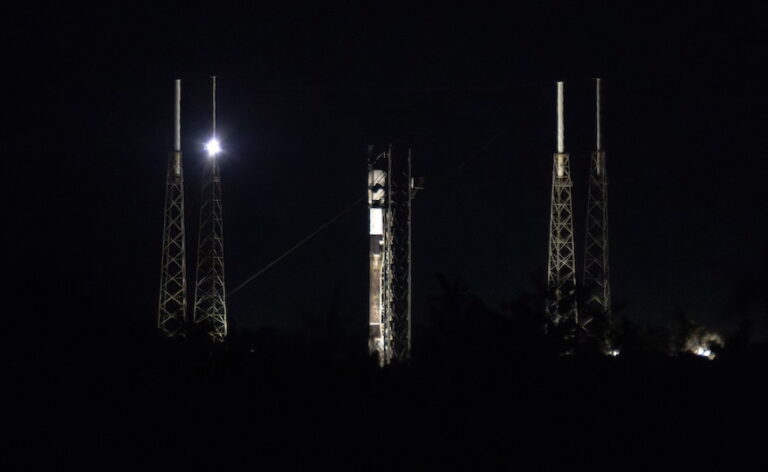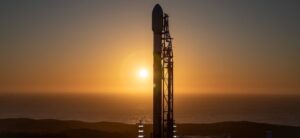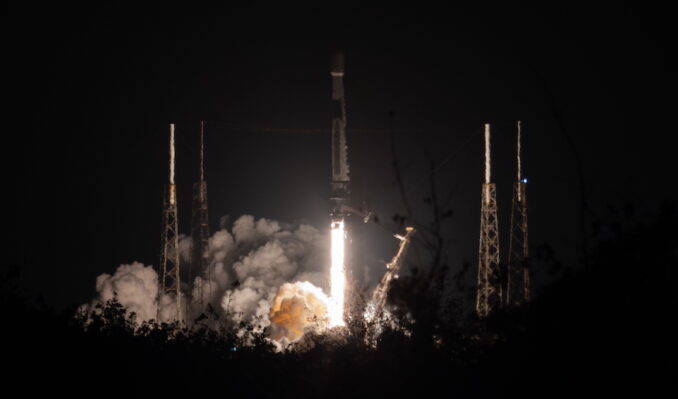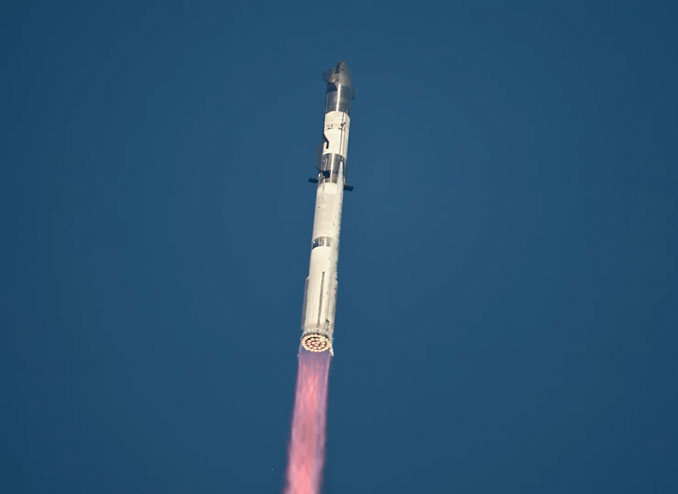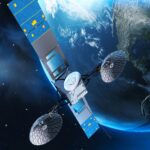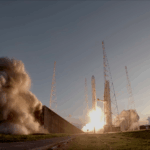Now Reading: India to launch Eurpope’s Proba-3 spacecraft pair to study the Sun, demonstrate tandem maneuvering in orbit
-
01
India to launch Eurpope’s Proba-3 spacecraft pair to study the Sun, demonstrate tandem maneuvering in orbit
India to launch Eurpope’s Proba-3 spacecraft pair to study the Sun, demonstrate tandem maneuvering in orbit
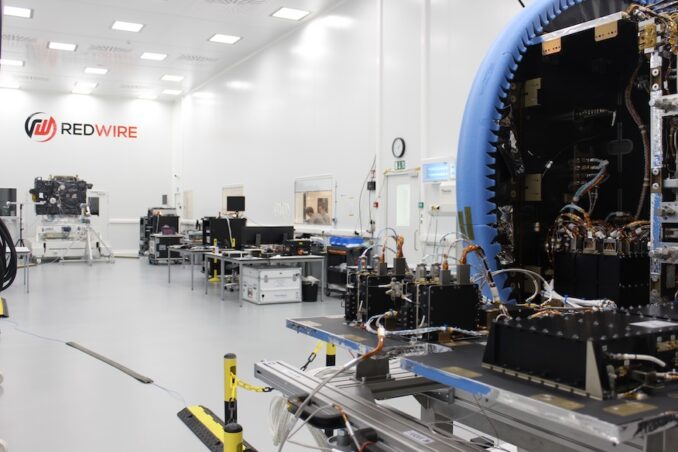

Update 5:46 a.m. EST (1046 UTC): The launch was delayed a day due to a “technical issue in the Proba-3 spacecraft,” per ESA.
The European Space Agency is preparing to launch two missions on Wednesday, half a world and half a day apart: Proba-3 from India and Sentinel-1C from French Guiana.
Because ESA and the European aerospace industry are still working towards restoring home-grown launch capability and rebuilding the continent’s position in the commercial launch market, it will rely upon the Indian Space Research Organization for the second mission: Proba-3. Before that, the Sentinel-1C Earth-observing satellite will launch on the first European-made Vega-C rocket since a failure in December 2022.
The pair of spacecraft making up the Proba-3 mission are scheduled to launch onboard a PSLV-XL (Polar Satellite Launch Vehicle) on Thursday, Dec. 5, at 4:12 p.m. IST (5:42 a.m. EST, 1042 UTC). ISRO will host a launch broadcast beginning roughly 30 minutes prior to liftoff.
With a total payload weight of 550 kg (1213 lb), ESA said the mission’s highly elliptical orbit would be “above the Vega-C capacity and Ariane 6 would be too costly.”
The Proba-3 mission consists of a 340 kg (750 lb) coronagraph spacecraft and a 200 kg (441 lb) occulter spacecraft. The pair will separate from the rocket’s fourth stage, still linked together, about 18 minutes into the mission. Ground controllers expect to establish a signal with the two spacecraft about 25 minutes later.
The two spacecraft will separate from each another in early 2025 to begin the commissioning phase of the mission. Researchers expect to acquire the first images of the Sun’s corona around March 2025, but it could take longer.
The roughly 200 million euro mission is designed to last about two years in duration after which the craft will burn up in the Earth’s atmosphere to prevent the spacecraft from becoming orbital debris.
Examining the Sun
Despite the name, Proba-3 is actually the fourth in the Proba series of in-orbit demonstration (IOD) missions from ESA. The agency said these missions are designed “for demonstrating and validating new technologies and concepts in orbit” designed by using “small satellites, embarking payload and instruments to deliver actual data to users to demonstrate a new capability.”
Proba-1 and Proba-V (V for vegetation) launched in 2001 and 2012 respectively and were designed for Earth observation, while Proba-2 launched in 2009 to study the Sun.
Proba-3 picks up the work of solar observations by using a binary spacecraft system to study the Sun’s corona by creating a localized total solar eclipse.
Normally, a total solar eclipse observed on Earth creates at most about 10 minutes of quality observation time and happens only about an average of 1.5 times per year. But the pair of spacecraft, working in tandem, will be able to establish eclipse conditions that create about six hours of observational time, 50 times per year.

In order to accomplish this, the two spacecraft will need to fly about 150 m (492 ft) apart. The occulter spacecraft needs to line up with the coronagraph spacecraft with an accuracy of about one millimeter, which is roughly the thickness of a human fingernail, according to ESA.
During a prelaunch media briefing on Nov. 28, Proba Project Manager Damien Galano, who joined the project back in 2014, said ESA never attempted precision flying at this level before.
“The occulter spacecraft accommodates a circular occulting disk of 1.4 meters in diameter. This disk will cast a shadow and the other spacecraft, the coronagraph spacecraft, embarks (the) telescope, and this spacecraft must be positioned precisely such that the telescope is in the center of the shadow cast by the occulter,” Galano said.
“In a nutshell, it’s an experiment in space to demonstrate a new concept, a new technology that is technically challenging… and to achieve this, we had to develop many special technologies and equipment specifically for the mission.”
The Proba-3 spacecraft will fly in a high elliptical Earth orbit with an orbital period of 19.7 hours. Mission managers decided to not fly in formation the full time in order to maximize the amount of fuel on board the spacecraft.
During the majority of the orbit, the satellites will follow a natural orbital path, but going into their apogee, which is around 60,000 km (37,282 mi), they will spend six hours in formation.

It takes a village
More than 40 companies contributed to the Proba-3 mission, with Sener acting as the system prime. The Belgium office of Redwire Space, headquartered in Jacksonville, Florida, provided avionics; satellite assembly and testing; and satellite operations.
In a video interview recorded at Redwire’s satellite assembly clean room, Marie Beekman, ESA’s Proba-3 Operations Engineer, described some of the challenges of testing the pair of spacecraft.
“The satellites will be flying at 150 meters from each other in space and obviously in this room we cannot do that. We can never really test what is going to happen out there because we have this distance between the two of them,” Beekman said. “So in order for the laser, for the one laser that’s coming from one spacecraft to reach the other one, we had to use mirrors to reflect the laser beam and make it look like, it was actually 150 meters distance. Then we see if the sensors are correctly seeing the movement of the satellites.

In a separate interview, Ruwan Ernst, the Proba-3 Satellite System Engineer from Redwire, said that experience developing Proba-3 will enable important capabilities for future missions.
“This mission will enable a ton of other missions. For example, you have to think that this coronagraphy can be done for discovering exoplanets. Now we have a situation where suns in other solar systems are obscuring planets orbiting them because they have too bright of light that cannot be blocked out by the cameras we have here on Earth. So, we simply cannot see the planets orbiting them,” Ernst said.
“So, imaging you have an [occulter] blocking that far away star’s light and a coronagraph filming in that direction, suddenly these planets become visible.”

He said another potential application could be creating a collection of small spacecraft that communicate using radio waves to form a virtual telescope.
“This is called astronomical interferometry, where you combine several radio signals into an artificial mix radio signal, which allows for high-resolution imaging,” Ernst said.
He argued that this would not only be more cost-effective than launching a large spacecraft that would need to deploy a large array, but it would also cut down on mission risk, since the loss of one satellite wouldn’t necessarily result in the mission being compromised.
Stay Informed With the Latest & Most Important News
Previous Post
Next Post
-
 012024 in Review: Highlights from NASA in Silicon Valley
012024 in Review: Highlights from NASA in Silicon Valley -
 02Panasonic Leica Summilux DG 15mm f/1.7 ASPH review
02Panasonic Leica Summilux DG 15mm f/1.7 ASPH review -
 03From Polymerization-Enabled Folding and Assembly to Chemical Evolution: Key Processes for Emergence of Functional Polymers in the Origin of Life
03From Polymerization-Enabled Folding and Assembly to Chemical Evolution: Key Processes for Emergence of Functional Polymers in the Origin of Life -
 04How New NASA, India Earth Satellite NISAR Will See Earth
04How New NASA, India Earth Satellite NISAR Will See Earth -
 05And Thus Begins A New Year For Life On Earth
05And Thus Begins A New Year For Life On Earth -
 06Astronomy Activation Ambassadors: A New Era
06Astronomy Activation Ambassadors: A New Era -
07SpaceX launch surge helps set new global launch record in 2024












